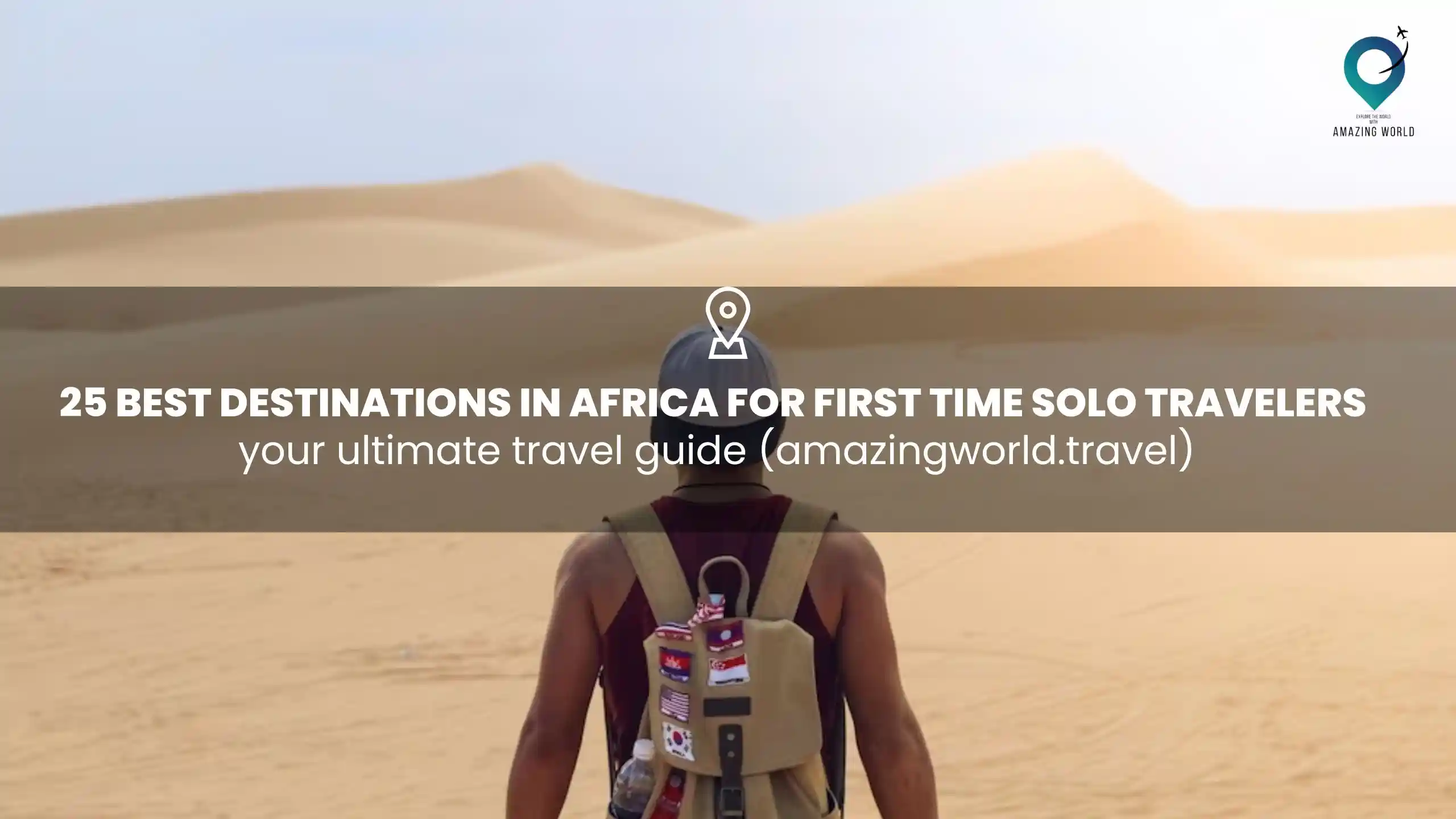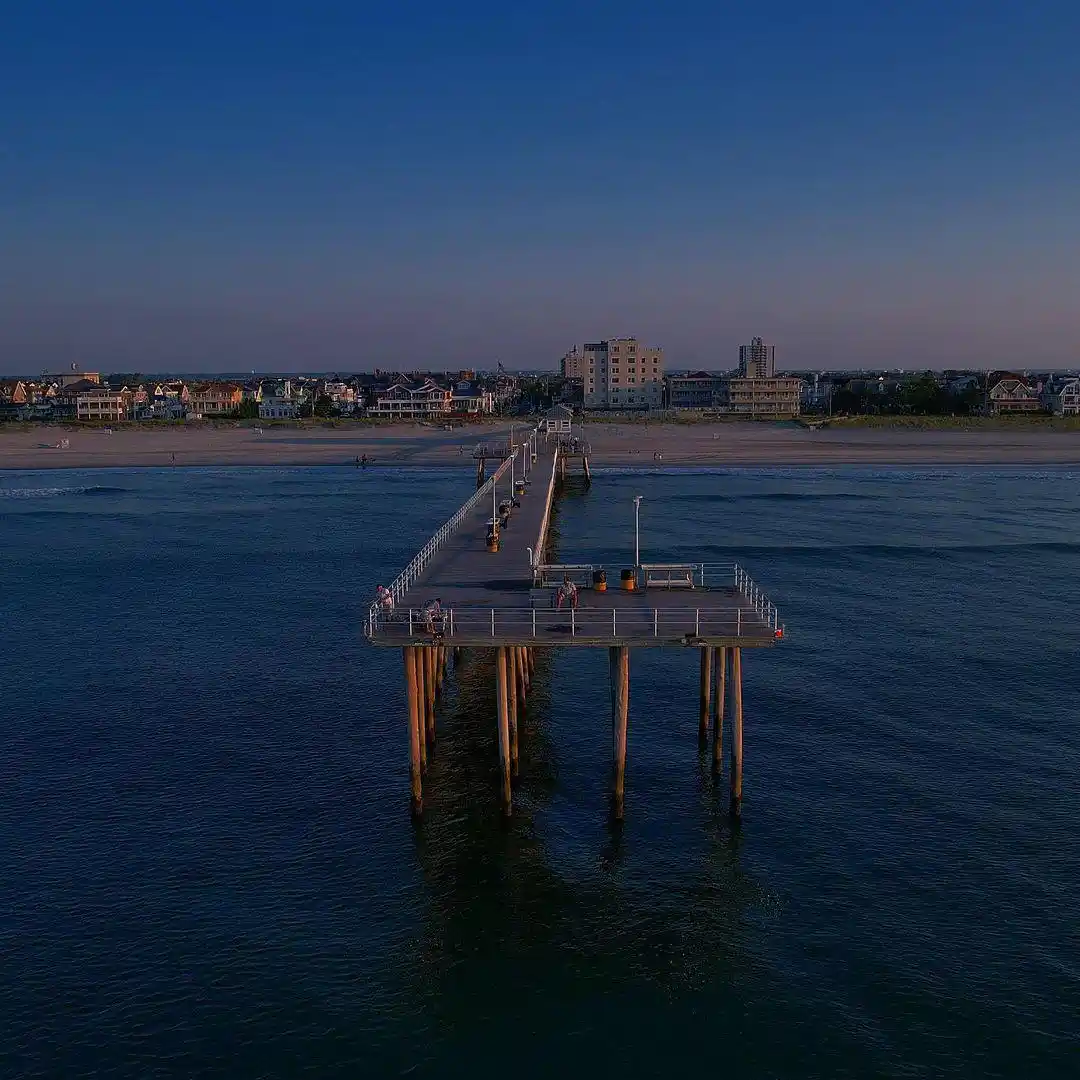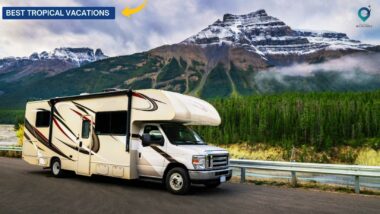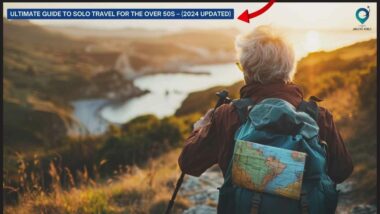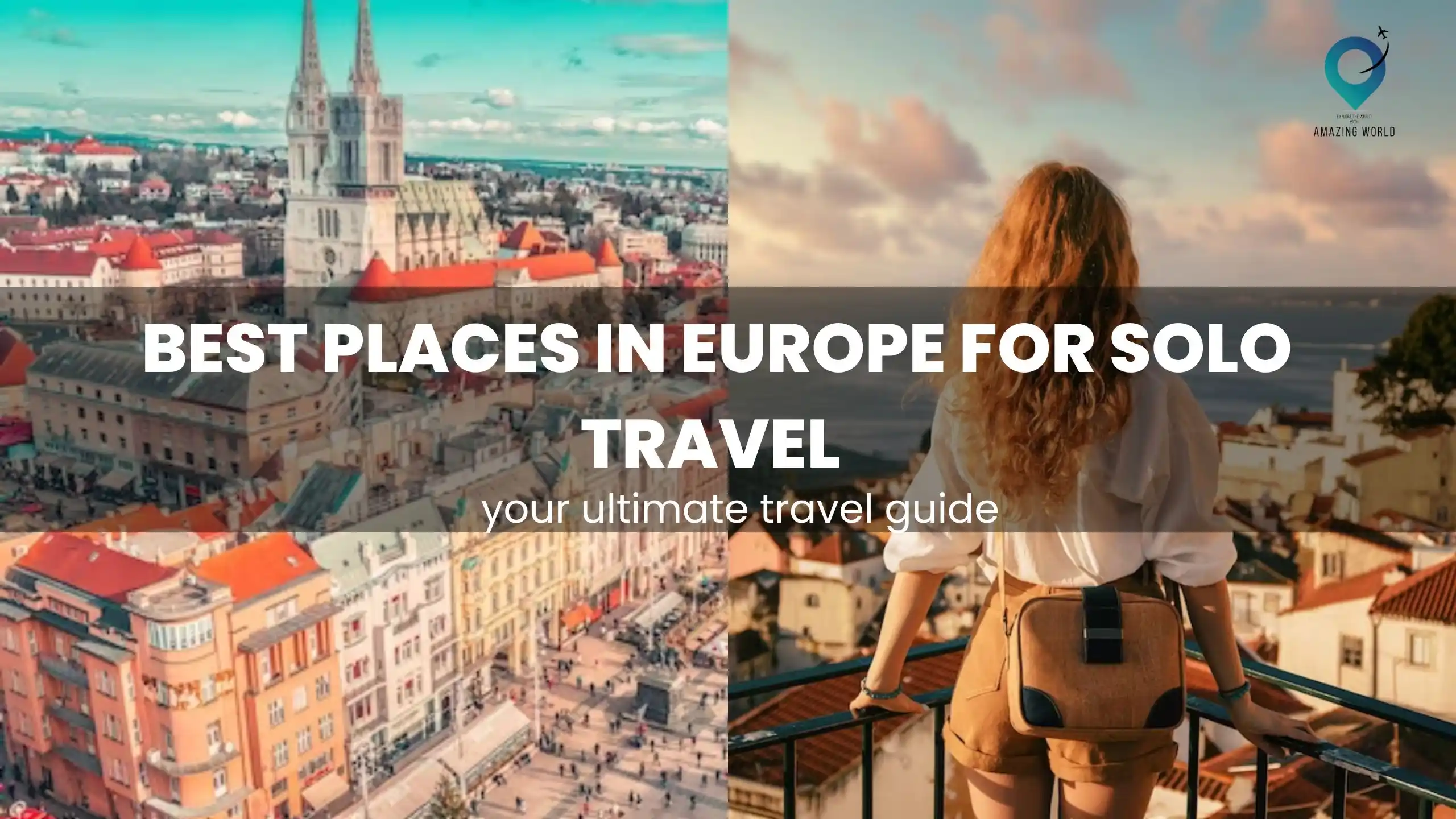25 Best Destinations in Africa for Solo Travelers
Table of Contents
ToggleWelcome to Africa, a continent of diverse cultures, stunning landscapes, and rich history. For the first time solo travelers, Africa offers a unique and unforgettable experience that cannot be found anywhere else in the world. From the bustling cities of South Africa and Morocco to the serene beaches of Seychelles and Zanzibar, Africa has something for everyone.
In this blog post, Amazing world has compiled a list of the 25 best destinations in Africa for first-time solo travelers. Along with what is a place known for, whether you’re looking for adventure, culture, wildlife, or relaxation, there’s a destination in Africa that will capture your heart and leave you with memories that will last a lifetime.
1. Cape Town, South Africa – “Where Adventure Meets Beauty”

Location: Cape Town is located in the southwestern part of South Africa, on the coast of the Atlantic Ocean.
Known for: Cape Town is known for its stunning natural beauty, diverse culture, and exciting adventure activities.
The best mode of transportation: The best mode of transportation in Cape Town is a combination of Uber/taxis, public buses, and the MyCiti bus rapid transit system.
Daily Budget: A daily budget of around $50-$80 USD is sufficient for food, accommodation, and transportation in Cape Town.
Culture: Cape Town is a melting pot of cultures, with influences from African, Dutch, British, and Malaysian cultures. The city has a vibrant arts and music scene, with many galleries and live music venues.
Nightlife: Cape Town has a vibrant nightlife scene, with many bars, clubs, and live music venues. Long Street in the city center is particularly popular for nightlife.
Food: Cape Town is known for its diverse and delicious cuisine, with influences from African, Dutch, and Malaysian cuisine. Some must-try dishes include Cape Malay curries, biltong (dried meat), and boerewors (spicy sausages).
Safety measures: As with any big city, it is important to take precautions and stay aware of your surroundings in Cape Town. Avoid walking alone at night and do not leave your belongings unattended.
Attractions: Some of the top attractions in Cape Town include Table Mountain, the V&A Waterfront, Kirstenbosch Botanical Gardens, and the Cape of Good Hope.
Some travel tips:
- Book a guided tour of Table Mountain for the best experience
- Visit the colorful Bo-Kaap neighborhood for a taste of Cape Malay culture
- Take a drive along the scenic Chapman’s Peak Drive
- Sample local wines on a tour of the nearby Cape Winelands
2. Marrakech, Morocco – “A sensory overload experience”

Location: Marrakech is located in the western part of Morocco, near the foothills of the Atlas Mountains.
Known for: Marrakech is known for its rich history, vibrant culture, and bustling markets. It’s a sensory overload experience that will leave you enchanted with the city’s colors, flavors, and aromas.
The best mode of transportation: The best mode of transportation in Marrakech is by foot. Most of the city’s attractions are located in the historic Medina, which is a pedestrian-only zone. Taxis and buses are also available.
Daily Budget: A daily budget of around $40-$60 USD is sufficient for food, accommodation, and transportation in Marrakech.
Culture: Marrakech has a rich and diverse culture, with influences from Berber, Arab, and European cultures. The city is home to many historic landmarks, museums, and art galleries that showcase the city’s cultural heritage.
Nightlife: Marrakech has a vibrant nightlife scene, with many bars, clubs, and live music venues. The city’s nightlife is centered around the Medina, with many establishments offering rooftop views of the city.
Food: Marrakech is known for its flavorful and aromatic cuisine, with influences from Berber, Arab, and Mediterranean cuisine. Some must-try dishes include tagine (slow-cooked stews), couscous, and mint tea.
Safety measures: Marrakech is generally a safe city, but it’s important to take precautions and stay aware of your surroundings. Be wary of scams and pickpockets in crowded markets and tourist areas.
Attractions: Some of the top attractions in Marrakech include the Jardin Majorelle, the Bahia Palace, the Koutoubia Mosque, and the Saadian Tombs.
Some travel tips:
- Negotiate prices before purchasing anything in the markets
- Dress conservatively, especially when visiting religious sites
- Visit the hammams (traditional bathhouses) for a relaxing spa experience
- Take a day trip to the nearby Atlas Mountains for breathtaking scenery
If You are planning to visit the USA and looking for the best flight booking from your destination then, So we recommend you book your flight from Qatar Airways or Emirates
3. Zanzibar, Tanzania – “Tropical paradise awaits you”
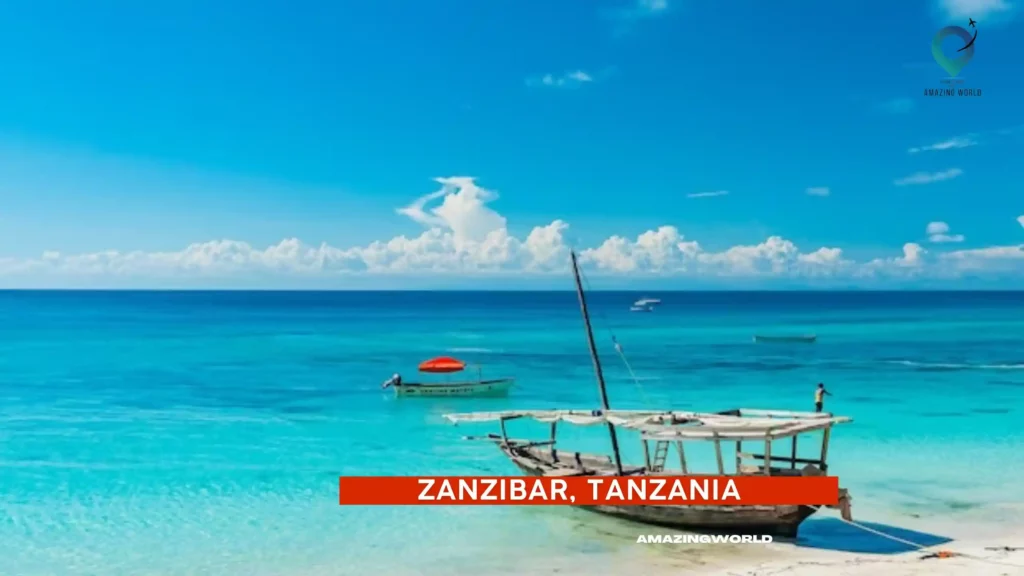
Location: Zanzibar is located off the east coast of Tanzania, in the Indian Ocean.
Known for: Zanzibar is known for its stunning beaches, rich culture, and historic architecture. It’s a tropical paradise that offers a unique blend of African, Arab, and Indian influences.
The best mode of transportation: The best mode of transportation in Zanzibar is by taxi or private car. Buses are also available, but they can be crowded and uncomfortable.
Daily Budget: A daily budget of around $50-$80 USD is sufficient for food, accommodation, and transportation in Zanzibar.
Culture: Zanzibar has a rich and diverse culture, with influences from Africa, Arab, and Indian cultures. The city is home to many historic landmarks, museums, and art galleries that showcase the city’s cultural heritage.
Nightlife: Zanzibar has a vibrant nightlife scene, with many bars, clubs, and live music venues. The city’s nightlife is centered around the Stone Town area, with many establishments offering stunning views of the ocean.
Food: Zanzibar is known for its delicious seafood, as well as its spicy curries and stews. Some must-try dishes include octopus curry, grilled fish, and pilau rice.
Safety measures: Zanzibar is generally a safe destination, but it’s important to take precautions and stay aware of your surroundings. Be wary of petty crime in crowded markets and tourist areas.
Attractions: Some of the top attractions in Zanzibar include the Stone Town area, the Jozani Forest, the Prison Island, and the stunning beaches of Nungwi and Kendwa.
Some travel tips:
- Take a spice tour to learn about the local spice industry
- Visit the local markets to sample fresh fruit and seafood
- Take a dhow (traditional boat) ride to explore the coast
- Learn some Swahili phrases to communicate with the locals.
4. Victoria Falls, Zambia/Zimbabwe – “Experience the power within”

Location: Victoria Falls is located on the border between Zambia and Zimbabwe in southern Africa.
Known for: Victoria Falls is known for its stunning natural beauty and incredible power. It’s one of the largest waterfalls in the world and a UNESCO World Heritage Site.
The best mode of transportation: The best mode of transportation to Victoria Falls is by plane or bus. The falls are located near the town of Livingstone in Zambia and Victoria Falls town in Zimbabwe, both of which have airports and bus connections.
Daily Budget:A daily budget of around $60-$100 USD is sufficient for food, accommodation, and transportation in Victoria Falls.
Culture: Victoria Falls is located in a region with a rich cultural heritage. Visitors can explore local villages and learn about the traditions of the people living in the area.
Nightlife: Victoria Falls has a vibrant nightlife scene, with many bars, restaurants, and nightclubs. The town of Livingstone in Zambia and Victoria Falls town in Zimbabwe both offer a variety of nightlife options.
Food: Victoria Falls has a variety of dining options, with local and international cuisine available. Some must-try dishes include braaivleis (grilled meat), sadza (a local maize-based dish), and biltong (dried meat).
Safety measures: Victoria Falls is generally a safe destination, but visitors should be aware of the risks associated with wildlife and water activities. Always follow safety guidelines and take precautions when exploring the area.
Attractions: The main attraction in Victoria Falls is the waterfall itself, which can be viewed from both the Zambia and Zimbabwe sides. Visitors can also go on a variety of adventure activities, including bungee jumping, whitewater rafting, and helicopter tours.
Some travel tips:
- Bring waterproof clothing and a camera to capture the stunning views
- Book activities in advance to ensure availability
- Respect the local culture and customs
- Be prepared for the heat and humidity in the area.
5. Serengeti National Park, Tanzania – “Get lost in nature”
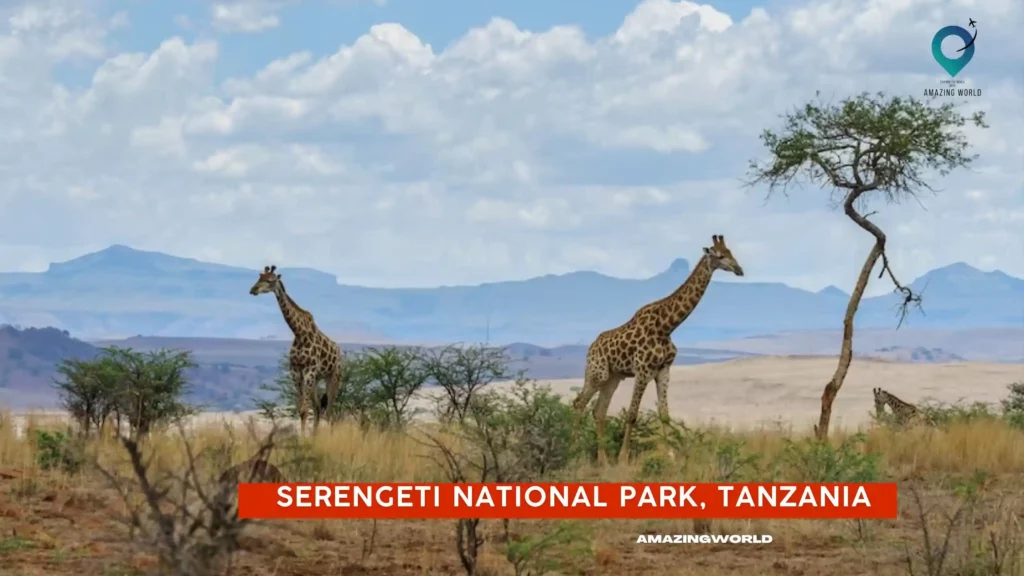
Location: Serengeti National Park is located in northern Tanzania, bordering Kenya. It’s part of the larger Serengeti ecosystem, which includes adjacent wildlife reserves and conservation areas.
Known for: Serengeti National Park is known for its stunning wildlife and natural beauty. It’s home to some of Africa’s most iconic animals, including lions, elephants, giraffes, and zebras.
The best mode of transportation: The best mode of transportation to Serengeti National Park is by plane or by car. Visitors can fly into Kilimanjaro International Airport or Arusha Airport and then take a domestic flight to one of the airstrips in the park. Alternatively, visitors can drive to the park from nearby towns and cities.
Daily Budget: A daily budget of around $150-$250 USD is sufficient for food, accommodation, and transportation in Serengeti National Park.
Culture: Serengeti National Park is located in the Maasai Mara region of Tanzania, and visitors can learn about the Maasai culture by visiting local villages and cultural centers.
Nightlife: Serengeti National Park is not known for its nightlife, but visitors can enjoy traditional music and dance performances in some of the lodges and campsites.
Food: Food options in Serengeti National Park are generally limited to restaurants and cafes located within lodges and campsites. However, visitors can also enjoy traditional African cuisines such as ugali (a maize-based dish) and nyama choma (grilled meat).
Safety measures: Visitors to Serengeti National Park should always follow the safety guidelines provided by their guides and rangers. Wild animals are present throughout the park, and visitors should exercise caution when exploring the area.
Attractions: The main attraction in Serengeti National Park is the wildlife, which can be viewed on game drives and walking safaris. Visitors can also visit the nearby Ngorongoro Crater and Olduvai Gorge, which are both UNESCO World Heritage Sites.
Some travel tips:
- Book a safari with a reputable tour operator or lodge to ensure a safe and enjoyable experience
- Bring binoculars and a camera to get the most out of the wildlife viewing experience
- Be prepared for the heat and dust by wearing light clothing and bringing sunscreen and a hat
- Respect the wildlife and do not approach or disturb them in any way.
If You are planning to visit the USA and looking for the best flight booking from your destination then, So we recommend you book your flight from Qatar Airways or Emirates
6. Essaouira, Morocco – “Coastal charm and culture”
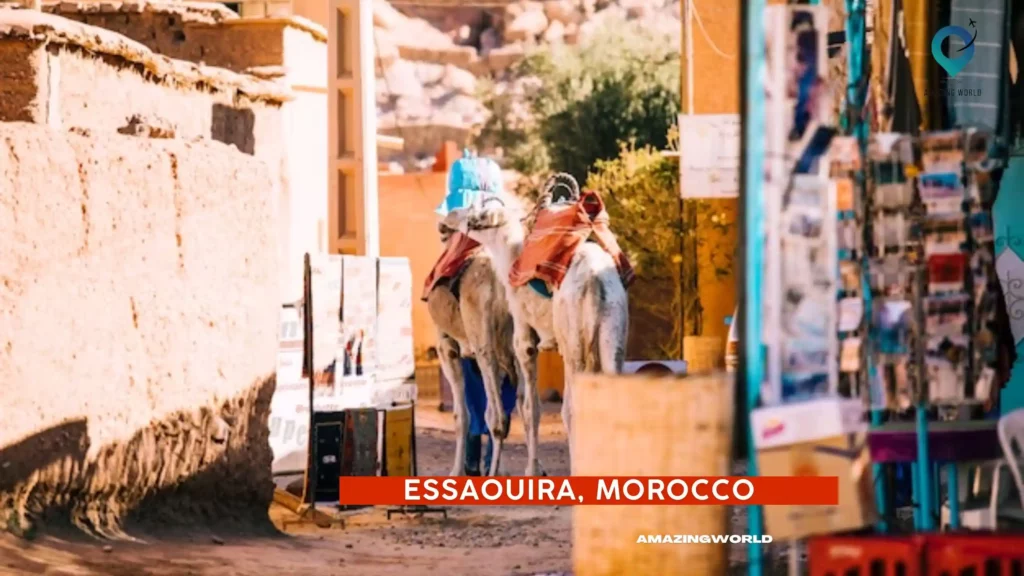
Location: Essaouira is located on the Atlantic coast of Morocco, approximately 180 km west of Marrakech.
Known for: Essaouira is known for its beautiful beaches, vibrant art scene, and historical significance. The city has been designated as a UNESCO World Heritage Site for its well-preserved medina, which dates back to the 18th century.
The best mode of transportation: The best mode of transportation to Essaouira is by bus or taxi from Marrakech. The journey takes approximately 2-3 hours and offers beautiful views of the Moroccan countryside.
Daily Budget: A daily budget of around $50-$100 USD is sufficient for food, accommodation, and transportation in Essaouira.
Culture: Essaouira is a melting pot of cultures, with influences from Berber, Arab, and European traditions. Visitors can explore the city’s rich history and architecture by visiting the medina, which is filled with winding alleys and traditional souks.
Nightlife: Essaouira has a laid-back nightlife scene, with many restaurants and cafes offering live music and entertainment. Visitors can also enjoy a romantic sunset horse ride on the beach.
Food: Essaouira is known for its fresh seafood, which can be enjoyed at the many restaurants lining the beachfront. Traditional Moroccan dishes such as tagine and couscous are also widely available.
Safety measures: Essaouira is generally considered to be a safe destination for travelers, but visitors should exercise caution in crowded areas and watch out for pickpockets.
Attractions: In addition to the beautiful beaches and historic medina, Essaouira has many other attractions for visitors to enjoy. These include the ramparts and fortifications, the Skala de la Ville (a 1765-built fortified sea bastion), and the Essaouira Citadel.
Some travel tips:
- Bring a windbreaker or light jacket, as the coastal breeze can be chilly in the evenings
- Take a guided tour of the medina to learn about its history and culture
- Book a camel ride or quad biking excursion to explore the surrounding dunes and countryside
- Shop for unique handicrafts such as argan oil, rugs, and pottery in the local souks.
7. Kruger National Park, South Africa – “Wildlife at its finest”

Location: Kruger National Park is located in northeastern South Africa, spanning across the provinces of Mpumalanga and Limpopo.
Known for: Kruger National Park is known for its incredible wildlife sightings, including the “Big Five” (lions, elephants, buffalos, leopards, and rhinos). The park is also home to a diverse array of other animal and plant species, making it a nature lover’s paradise.
The best mode of transportation: The best mode of transportation to Kruger National Park is by car, as this allows for greater flexibility in exploring the park. Visitors can also opt to join a guided safari tour.
Daily Budget: A daily budget of around $100-$150 USD is recommended for accommodation, food, and park fees in Kruger National Park.
Culture: Kruger National Park offers visitors a chance to experience the culture and traditions of South Africa’s indigenous tribes, such as the Shangaan people. Many lodges and camps within the park offer cultural activities and performances.
Nightlife: While wildlife viewing opportunities are the main attraction at Kruger National Park, visitors can also enjoy night-time game drives and stargazing activities.
Food: Many of the lodges and camps within Kruger National Park offer traditional South African cuisine, such as braai (barbecue) and biltong (dried meat). Visitors can also stock up on groceries at the park’s shops and prepare their meals.
Safety measures: Visitors to Kruger National Park should exercise caution when encountering wildlife and follow the park’s safety guidelines. It is also recommended to avoid walking alone at night in the park.
Attractions: The main attraction of Kruger National Park is, of course, its wildlife. Visitors can also explore the park’s various ecosystems, including savannah grasslands, riverine forests, and rocky outcrops.
Some travel tips:
- Book accommodation and safari tours in advance, as the park can get busy during peak season
- Bring binoculars and a good camera for wildlife sightings
- Pack warm clothing for early morning and evening game drives
- Consider staying at a private lodge or camp for a more exclusive safari experience.
8. Fes, Morocco – “A medieval city escape”

Location: Fes is located in northern Morocco, approximately 3 hours east of the capital city, Rabat.
Known for: Fes is known for its well-preserved medieval architecture, bustling souks (markets), and rich cultural heritage.
The city is home to the oldest university in the world, the University of Al Quaraouiyine, and is also known for its traditional handicrafts, such as leather goods and ceramics.
The best mode of transportation: The best way to explore Fes is on foot, as the narrow, winding streets of the old medina (walled city) are not accessible by car. Taxis and horse-drawn carriages are also available for longer journeys.
Daily Budget: A daily budget of around $50-$70 USD is recommended for accommodation, food, and activities in Fes.
Culture: Fes is a melting pot of Arab, Berber, and Andalusian cultures, and visitors can experience this unique blend through the city’s architecture, food, and traditional music and dance performances.
Nightlife: While Fes is not known for its nightlife scene, visitors can enjoy a leisurely evening stroll through the medina, or attend a cultural event or performance.
Food: Fes is known for its flavorful Moroccan cuisine, including tagine (a slow-cooked stew), couscous, and pastilla (a sweet and savory pastry). Visitors can try these dishes at local restaurants and cafes, or learn how to prepare them through a cooking class.
Safety measures: Like many cities in Morocco, Fes is generally safe for visitors, but it is recommended to exercise caution when exploring the medina at night and to avoid carrying large sums of money.
Attractions: The main attractions in Fes include the old medina, the University of Al Quaraouiyine, the Bou Inania Madrasa (a traditional Islamic school), and the Chouara Tannery (where leather is processed using traditional methods).
Some travel tips:
- Hire a local guide to help navigate the medina’s maze-like streets and to learn more about the city’s history and culture
- Wear comfortable walking shoes and clothing that covers the knees and shoulders, especially when visiting religious sites
- Bargain with vendors in the souks to get the best prices on souvenirs and handicrafts
9. Mount Kilimanjaro, Tanzania – “The ultimate summit challenge”
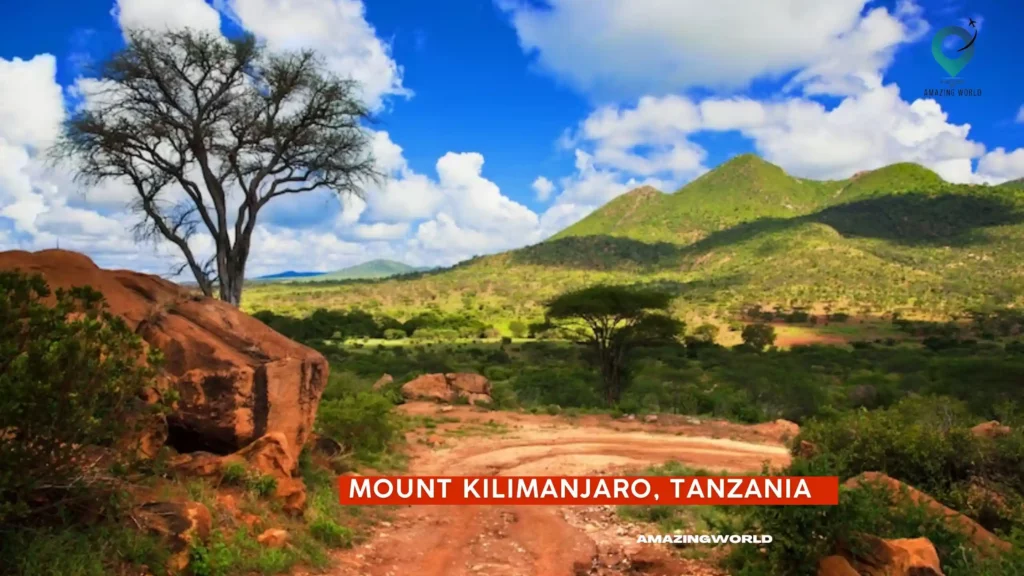
Location: Mount Kilimanjaro is located in northern Tanzania, near the border with Kenya.
Known for: Mount Kilimanjaro is known for being the highest peak in Africa, standing at 19,341 feet (5,895 meters) above sea level. It is also known for its stunning views and challenging climb.
The best mode of transportation: Most visitors fly into Kilimanjaro International Airport and then take a shuttle or taxi to the starting point of their climb. Porters and guides are typically hired to carry gear and provide support during the climb.
Daily Budget: A climb up Mount Kilimanjaro can be expensive, with costs ranging from $1,500 to $5,000 USD depending on the route, length of the climb, and level of support needed.
Culture: The local Chagga people have lived on the slopes of Mount Kilimanjaro for centuries, and visitors can learn about their traditions and way of life through cultural tours and homestays.
Nightlife: As most visitors are focused on climbing the mountain, there is not much of a nightlife scene in the surrounding towns and villages.
Food: Climbers typically bring their food or hire a cook to provide meals during the climb. Traditional Tanzanian dishes such as ugali (a type of maize porridge) and nyama choma (grilled meat) may be available at local restaurants.
Safety measures: Climbing Mount Kilimanjaro can be physically demanding and requires careful preparation and planning. It is important to choose a reputable tour operator, bring appropriate gear and clothing, and follow the advice of your guide.
Attractions: The main attraction of Mount Kilimanjaro is, of course, the climb itself. There are several routes to choose from, ranging in difficulty and length, and climbers can experience a variety of landscapes and ecosystems on the way to the summit.
Some travel tips:
- Take time to acclimatize to the altitude before attempting the climb
- Pack warm and waterproof clothing, as weather conditions can change quickly
- Bring a reusable water bottle to minimize waste on the mountain
- Respect the natural environment and follow leave-no-trace principles to minimize the impact on the mountain’s fragile ecosystems.
You Also May Like it– Top 22 Places to Visit in Phuket |Thailand
10. Maasai Mara National Reserve, Kenya – “Experience the Great Migration”

Location: Maasai Mara National Reserve is located in southwestern Kenya, along the Tanzanian border.
Known for: Maasai Mara National Reserve is known for its incredible wildlife, including the annual Great Migration of wildebeest and zebras.
The best mode of transportation: Most visitors fly into Nairobi and then take a small plane or drive to the reserve. Once inside the reserve, visitors can take game drives in 4×4 vehicles or even hot air balloon rides for a unique perspective.
Daily Budget: The cost of visiting Maasai Mara National Reserve can vary widely depending on the level of accommodation and activities chosen. Budget travelers can expect to spend around $50-100 USD per day, while luxury travelers can spend several hundred dollars or more per day.
Culture: The Maasai people are the traditional inhabitants of the area around Maasai Mara National Reserve, and visitors can learn about their culture and way of life through cultural tours and visits to Maasai villages.
Nightlife: There is not much of a nightlife scene in the reserve, as most visitors are focused on wildlife viewing and outdoor activities during the day.
Food: Most accommodations in and around the reserve offer meals, including traditional Kenyan dishes such as ugali, sukuma wiki (a type of collard greens), and nyama choma (grilled meat).
Safety measures: Visitors should follow the advice of their guide and stay inside designated areas of the reserve to avoid encounters with dangerous animals. It is also important to bring appropriate clothing and gear for outdoor activities and protect against mosquito-borne illnesses.
Attractions: The main attraction of Maasai Mara National Reserve is the wildlife, including lions, cheetahs, elephants, and of course the Great Migration. Visitors can also take cultural tours and hot air balloon rides for a unique perspective on the reserve.
Some travel tips:
- Plan your visit during the Great Migration (typically July-October) for the best chance to see the wildebeest and zebras in action
- Bring binoculars and a camera with a zoom lens to capture wildlife sightings
- Respect the wildlife and the natural environment by following park rules and regulations
If You are planning to visit the USA and looking for the best flight booking from your destination then, So we recommend you book your flight from Qatar Airways or Emirates
11. Stone Town, Zanzibar – “Discover a cultural gem”
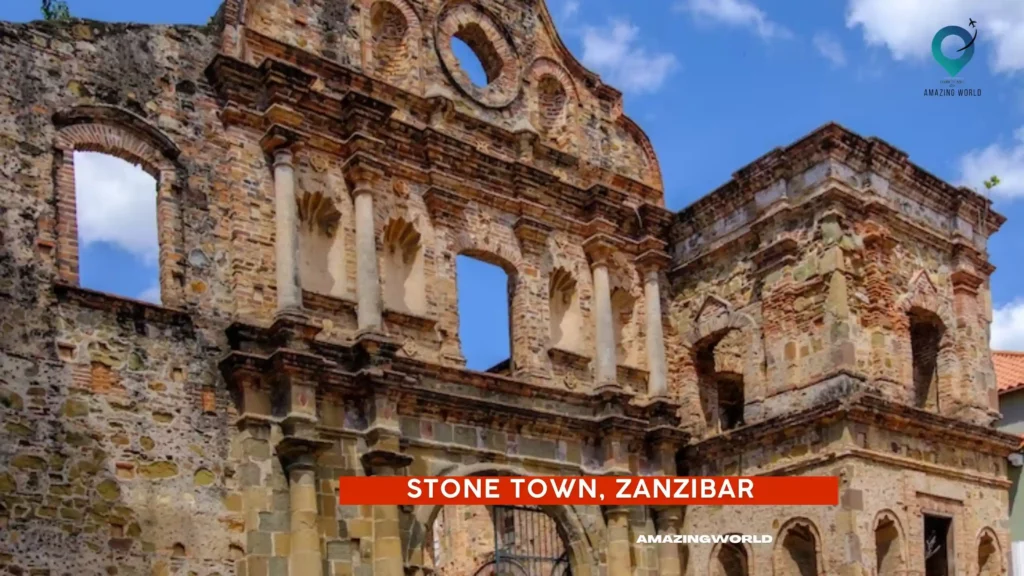
Location: Stone Town is located on the western coast of the island of Zanzibar, off the coast of Tanzania in East Africa.
Known for: Stone Town is known for its rich history and cultural heritage, including its role as a center of the East African slave trade.
The best mode of transportation: Most visitors fly into the airport in Zanzibar City and then take a taxi or shuttle to Stone Town. Once in Stone Town, the best way to get around is on foot, as the narrow streets and alleys are not easily navigable by car.
Daily Budget: The cost of visiting Stone Town can vary widely depending on the level of accommodation and activities chosen. Budget travelers can expect to spend around $30-50 USD per day, while luxury travelers can spend several hundred dollars or more per day.
Culture: Stone Town is a UNESCO World Heritage Site and is home to a rich blend of cultures, including African, Arab, Indian, and European influences. Visitors can explore the narrow streets and alleyways, visit historic sites such as the former slave market and the House of Wonders, and sample the local cuisine.
Nightlife: There is a lively nightlife scene in Stone Town, with many bars and restaurants offering live music and entertainment.
Food: Zanzibari cuisine is a blend of African, Arab, and Indian influences, with seafood and spices featuring prominently. Visitors can sample local dishes such as biryani, seafood curry, and Zanzibari pizza.
Safety measures: Visitors should take precautions against petty crimes such as pickpocketing, and should also be aware of cultural sensitivities and dress modestly when visiting mosques and other religious sites.
Attractions: In addition to its rich history and cultural heritage, Stone Town is also known for its beaches and water activities such as snorkeling and diving. Visitors can also take spice tours to learn about the island’s role as a center of the spice trade.
Some travel tips:
- Stay in a traditional riad or guesthouse for an authentic experience
- Visit the Forodhani Night Market for street food and local delicacies
- Take a dhow boat tour to explore the coastline and nearby islands.
12. Sossusvlei, Namibia – “Dune surfing anyone?”

Location: Sossusvlei is located in the southern part of the Namib Desert in Namibia, in southwestern Africa.
Known for: Sossusvlei is known for its stunning red dunes, some of which reach heights of over 300 meters.
The best mode of transportation: Most visitors fly into the capital city of Windhoek and then rent a car to drive to Sossusvlei. Once there, the best way to explore the dunes is on foot or by hiring a guide with a 4×4 vehicle.
Daily Budget: The cost of visiting Sossusvlei can vary widely depending on the level of accommodation and activities chosen. Budget travelers can expect to spend around $50-100 USD per day, while luxury travelers can spend several hundred dollars or more per day.
Culture: Sossusvlei is a remote and sparsely populated area, with a unique and rugged landscape that has been shaped by wind and water over millions of years.
Nightlife: There is no nightlife to speak of in Sossusvlei, as it is primarily a destination for outdoor activities and nature lovers.
Food: Visitors can enjoy local Namibian cuisine at lodges and campsites in the area, with dishes featuring game meat and traditional African ingredients such as maize and beans.
Safety measures: Visitors should take precautions against the harsh desert environment, including bringing plenty of water and sunscreen, and wearing appropriate clothing and footwear. It is also important to respect the natural environment and stay on designated trails to avoid damaging the delicate ecosystem.
Attractions: The main attraction in Sossusvlei is the towering dunes, which offer incredible views and the opportunity for activities such as hiking and dune surfing. Visitors can also explore nearby attractions such as the Sesriem Canyon and the Deadvlei salt pan.
Some travel tips:
- Plan to visit Sossusvlei in the early morning or late afternoon for the best light and cooler temperatures
- Book accommodations well in advance, as the area can be busy during peak season
- Bring a camera and plenty of memory cards to capture the stunning scenery.
13. Chefchaouen, Morocco – “The blue pearl escape”
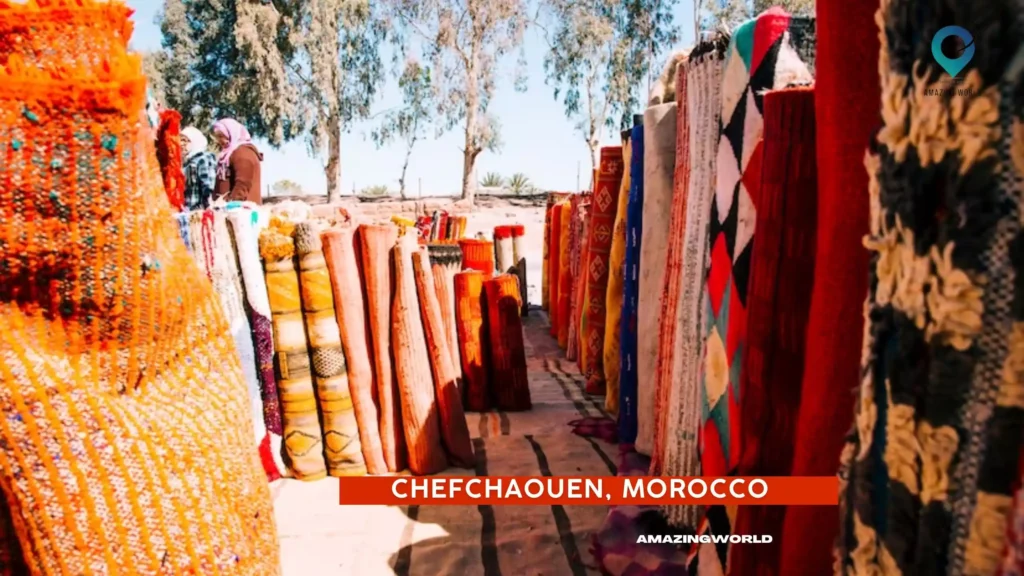
Location: Chefchaouen is located in the Rif Mountains of northwest Morocco, about a three-hour drive from Tangier.
Known for: Chefchaouen is known for its striking blue-painted buildings and narrow winding streets, making it a popular destination for photographers and Instagrammers.
The best mode of transportation: Most visitors will arrive by car or bus, and once in Chefchaouen, the best way to explore the town is on foot.
Daily Budget: Chefchaouen can be a budget-friendly destination, with accommodations ranging from budget-friendly hostels to high-end hotels. Expect to spend around $30-50 USD per day on food, accommodations, and activities.
Culture: The town has a mix of Berber and Arab culture, with a strong Andalusian influence due to its history as a refuge for Muslims and Jews fleeing Spain in the 15th century.
Nightlife: Chefchaouen is not known for its nightlife, but visitors can enjoy a cup of tea or coffee in one of the many cafes or relax in their accommodations after a day of exploring.
Food: Visitors can enjoy a mix of Moroccan and Mediterranean cuisine, including tagine, couscous, and fresh seafood. Local street food such as falafel and shawarma can also be found throughout the town.
Safety measures: Chefchaouen is generally a safe destination, but visitors should take precautions such as keeping their valuables secure and being aware of pickpockets in crowded areas.
Attractions: The main attraction in Chefchaouen is exploring the town’s blue-painted streets and alleyways, visiting the Spanish Mosque for panoramic views, and hiking in the nearby Rif Mountains.
Some travel tips:
- Dress modestly, as Chefchaouen is a conservative town
- Bring comfortable walking shoes, as the town’s narrow streets can be steep and uneven
- Visit during the shoulder season (spring or fall) to avoid the summer crowds and heat.
Must Explore Post– Best Places to Visit in Maldives
14. Lake Malawi, Malawi – “A lake of stars”
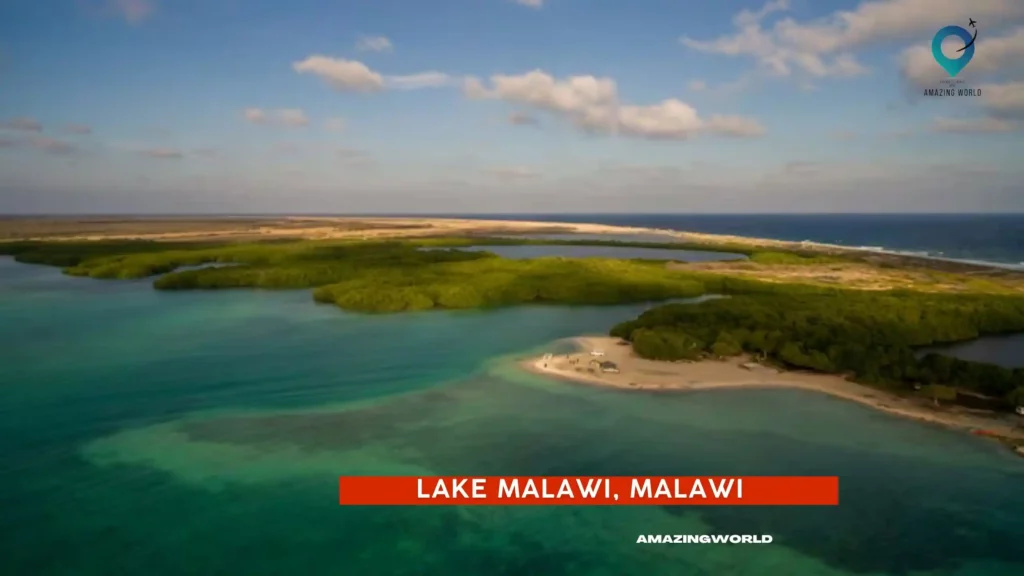
Location: Lake Malawi is located in southeastern Africa, bordered by Malawi, Mozambique, and Tanzania.
Known for: Lake Malawi is known for its crystal-clear waters, sandy beaches, and stunning sunsets, earning it the nickname “Lake of Stars.”
The best mode of transportation: Most visitors will arrive by plane or bus and then use a combination of boats and taxis to get around the lake’s shore.
Daily Budget: Lake Malawi can be a budget-friendly destination, with accommodations ranging from budget-friendly hostels to high-end lodges. Expect to spend around $30-50 USD per day on food, accommodations, and activities.
Culture: The lake is home to several ethnic groups, including the Chewa, Ngoni, and Yao, each with its traditions and customs.
Nightlife: Lake Malawi has a laid-back nightlife scene, with visitors enjoying beach bonfires, live music, and stargazing.
Food: Visitors can enjoy a mix of Malawian and international cuisine, including fresh fish from the lake, grilled meats, and vegetarian options.
Safety measures: Lake Malawi is generally a safe destination, but visitors should take precautions such as wearing life jackets when participating in water activities and avoiding swimming in areas with strong currents.
Attractions: The main attraction at Lake Malawi is its natural beauty, with visitors enjoying swimming, snorkeling, kayaking, and fishing in the lake’s clear waters. Other popular activities include hiking, bird watching, and visiting local villages.
Some travel tips:
- Bring sunscreen and insect repellent, as the lake’s sunny shores can be hot and buggy.
- Respect local customs and traditions, such as covering up when entering villages or attending ceremonies.
- Consider visiting during the dry season (May to October) for the best weather and water visibility.
15. Gorilla Trekking in Bwindi Impenetrable National Park, Uganda – “A once-in-a-lifetime adventure”
Location: Bwindi Impenetrable National Park is located in southwestern Uganda, near the border of the Democratic Republic of Congo and Rwanda.
Known for: The park is known for its population of mountain gorillas, which are critically endangered species. Gorilla trekking in Bwindi is a unique and unforgettable experience.
The best mode of transportation: Most visitors will arrive by plane or bus and then use a combination of 4×4 vehicles and hiking to reach the park’s gorilla trekking trails.
Daily Budget: Gorilla trekking in Bwindi can be expensive, with permits costing $700-800 USD per person. Visitors should also budget for accommodations, food, and transportation, with daily costs ranging from $100-200 USD per day.
Culture: The park is home to several indigenous communities, including the Batwa people, who have lived in the forest for generations. Visitors can learn about their culture and traditions through guided tours.
Nightlife: Bwindi is a quiet and remote destination, with visitors typically enjoying peaceful evenings around a campfire or in a lodge.
Food: Visitors can enjoy a mix of Ugandan and international cuisine, including fresh fruits and vegetables, grilled meats, and vegetarian options.
Safety measures: Gorilla trekking in Bwindi is generally safe, but visitors should follow the instructions of their guides to ensure a safe and enjoyable experience. This includes maintaining a safe distance from the gorillas and following hygiene protocols to prevent the spread of diseases.
Attractions: The main attraction at Bwindi is gorilla trekking, with visitors embarking on a guided hike through the forest to observe the gorillas in their natural habitat. Other activities include nature walks, bird watching, and visiting nearby villages and communities.
Some travel tips:
- Book your gorilla trekking permit well in advance, as they are in high demand and limited in number.
- Be prepared for a strenuous hike, as gorilla trekking can take several hours and involves steep terrain.
- Respect the gorillas’ space and avoid direct eye contact, as they are wild animals and can be unpredictable.
16. Pyramids of Giza, Egypt – “Ancient wonders await you”
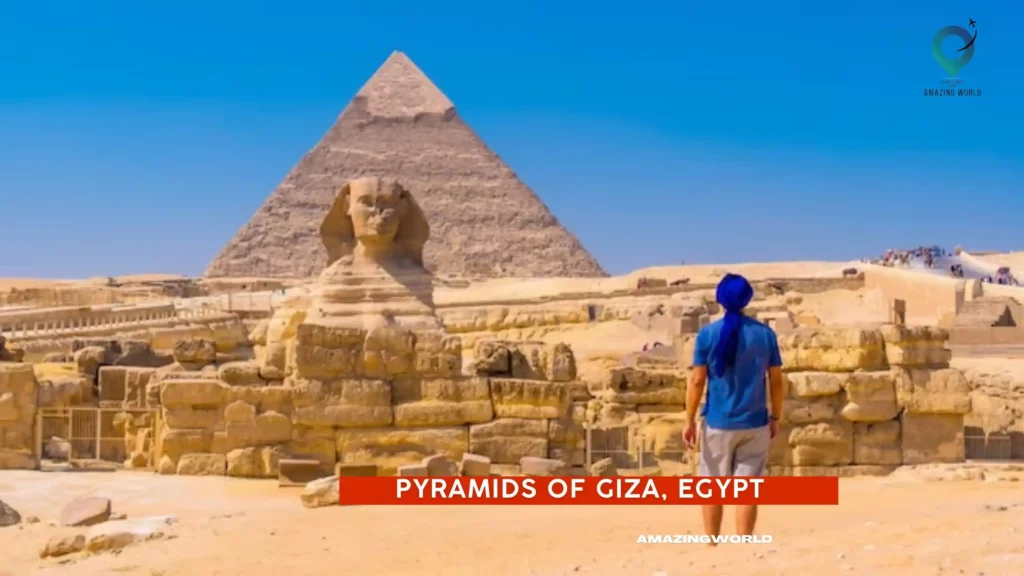
Location: The Pyramids of Giza are located on the Giza Plateau, just outside of Cairo, the capital city of Egypt.
Known for: The Pyramids of Giza are world-renowned for their historical significance and ancient beauty. The site includes the Great Pyramid of Giza, the Pyramid of Khafre, the Pyramid of Menkaure, and the Sphinx.
The best mode of transportation: The most popular mode of transportation to the Pyramids of Giza is by taxi or private car. Many organized tours are also available that include transportation.
Daily Budget: The cost of visiting the Pyramids of Giza varies depending on the activities you choose. Admission to the site starts at around $10. Guided tours, camel rides, and other activities are available for additional fees.
Culture: The Pyramids of Giza are an important part of Egyptian culture and history. Visitors should dress modestly out of respect for local customs and traditions.
Nightlife: Cairo has a vibrant nightlife scene, with many bars, clubs, and restaurants available for visitors to enjoy.
Food: Egyptian cuisine is known for its unique blend of flavors and spices. Local dishes to try to include koshari, ful medames, and shawarma.
Safety measures: Visitors should be aware of potential scams and pickpocketing at the Pyramids of Giza. It is also important to stay hydrated and protected from the sun, especially during the hot summer months.
Attractions: In addition to the Pyramids of Giza, visitors can also explore the nearby Sphinx and the Solar Boat Museum. The sound and light show at the Pyramids is also a popular attraction.
Some travel tips:
- It is recommended to visit the Pyramids of Giza early in the morning or late in the afternoon to avoid crowds and the heat.
- Hiring a knowledgeable guide can enhance your experience and provide valuable insight into the history and significance of the site.
- Camel rides are available for those looking for a unique and traditional mode of transportation.
17. Okavango Delta, Botswana – “Explore Africa’s wetland paradise”
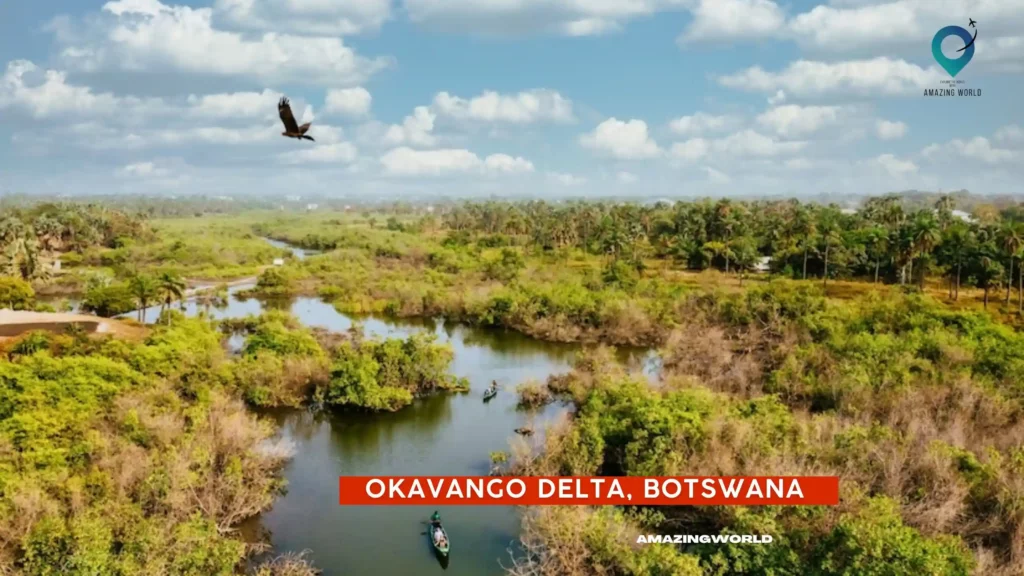
Location: Okavango Delta is located in northern Botswana, covering an area of about 22,000 square kilometers.
Known for: The Okavango Delta is one of Africa’s most unique natural wonders, as it is a wetland paradise filled with wildlife, from elephants and giraffes to lions and cheetahs. Visitors can explore the delta’s vast network of channels and lagoons on mokoro (traditional dugout canoe) rides, boat safaris, and guided walks.
The best mode of transportation: Mokoro rides are the most popular way to explore the Okavango Delta. Visitors can also take boat safaris and guided walks.
Daily Budget: The daily budget for a trip to Okavango Delta can vary depending on the type of accommodation and activities chosen, but it is generally considered to be a high-end destination.
Culture: The Okavango Delta is home to several indigenous communities, including the BaYei people, who have been living in and around the delta for centuries. Visitors can learn about their culture and traditions through community tours and homestays.
Nightlife: The Okavango Delta is a wildlife destination, so nightlife is not a significant feature. However, some lodges offer night safaris and cultural performances.
Food: Visitors can enjoy delicious African-inspired cuisine at the lodges and camps in the Okavango Delta, with many dishes featuring locally sourced ingredients.
Safety measures: Visitors should take precautions against malaria and other mosquito-borne illnesses. It is also essential to follow the safety guidelines provided by the guides and camp staff during wildlife encounters.
Attractions: The Okavango Delta’s attractions include game drives, mokoro rides, boat safaris, birdwatching, and cultural tours.
Some travel tips: It is best to visit the Okavango Delta during the dry season (May to October) when the wildlife congregates around the delta’s water sources.
Book lodges and camps in advance, especially during peak season. Bring comfortable, light clothing and appropriate footwear for outdoor activities.
18. Dakar, Senegal – “West African cultural hub”
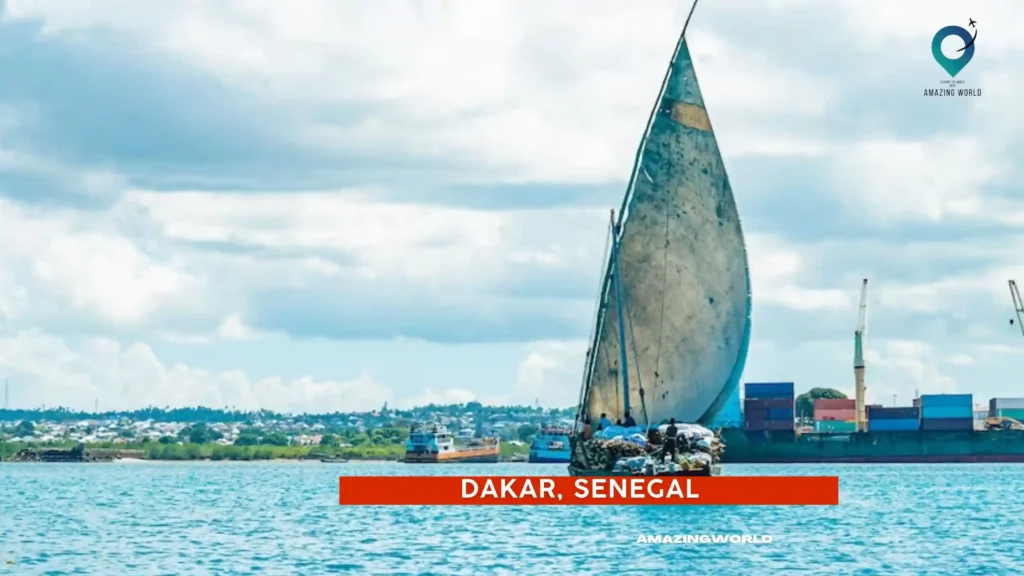
Known for: Being a vibrant cultural hub of West Africa, with a rich history and a blend of African, French, and Islamic influences.
The best mode of transportation: Taxis, buses, and ferries are the most common modes of transportation in Dakar.
Daily budget: A daily budget of around $50-$100 should be sufficient for accommodations, food, and transportation.
Culture: Dakar is a melting pot of cultures and is known for its music, art, and fashion scenes. You can explore the city’s rich cultural heritage by visiting museums, art galleries, and markets.
Nightlife: Dakar has a vibrant nightlife scene with plenty of bars and clubs offering live music, dancing, and delicious cocktails.
Food: Senegalese cuisine is diverse and flavorful, with a mix of French and African influences. Some must-try dishes include Thieboudienne (Senegal’s national dish), Yassa chicken, and Mafé.
Safety measures: While Dakar is generally safe, it’s important to take necessary precautions such as avoiding walking alone at night and keeping an eye on your belongings.
Attractions: Some of the top attractions in Dakar include the Gorée Island, the African Renaissance Monument, and the Dakar Grand Mosque.
Some travel tips: It’s recommended to learn some basic French as it’s the official language in Senegal. You should also dress modestly and respect the local customs and traditions. Additionally, bargaining is a common practice in markets, so don’t be afraid to negotiate prices.
19. La Digue Island, Seychelles – “Secluded Island paradise found”

Location: La Digue Island is located in the Seychelles archipelago, situated in the Indian Ocean.
Known for: La Digue Island is known for its picturesque, secluded beaches, crystal-clear waters, and stunning granite boulders that offer visitors the perfect backdrop for breathtaking photos.
The best mode of transportation: The island is small enough to explore by foot or bicycle, making it the best mode of transportation. Visitors can rent a bike or simply walk around the island.
Daily Budget: A daily budget for La Digue Island can vary depending on your accommodation, food, and activities. A budget of around $100 per day is reasonable for a comfortable stay.
Culture: The island’s culture is a unique blend of African, European, and Asian influences, and visitors can witness this diversity in the island’s cuisine, architecture, and music.
Nightlife: The nightlife on the island is low-key, with a few bars and restaurants offering live music and entertainment.
Food: The island’s cuisine features a fusion of Creole, French, and Indian flavors, with fresh seafood being a highlight.
Safety measures: La Digue Island is generally safe for solo travelers. However, visitors should take precautions to protect themselves from the sun and should not leave their belongings unattended.
Attractions: Some of the island’s top attractions include Anse Source d’Argent beach, the Veuve Nature Reserve, and the island’s traditional vanilla plantation.
Some travel tips: It’s recommended to book accommodations in advance, especially during peak season. Visitors should also be aware of the island’s eco-friendly policies and should take care to reduce their environmental impact while visiting.
20. Etosha National Park, Namibia – “The ultimate wildlife experience”
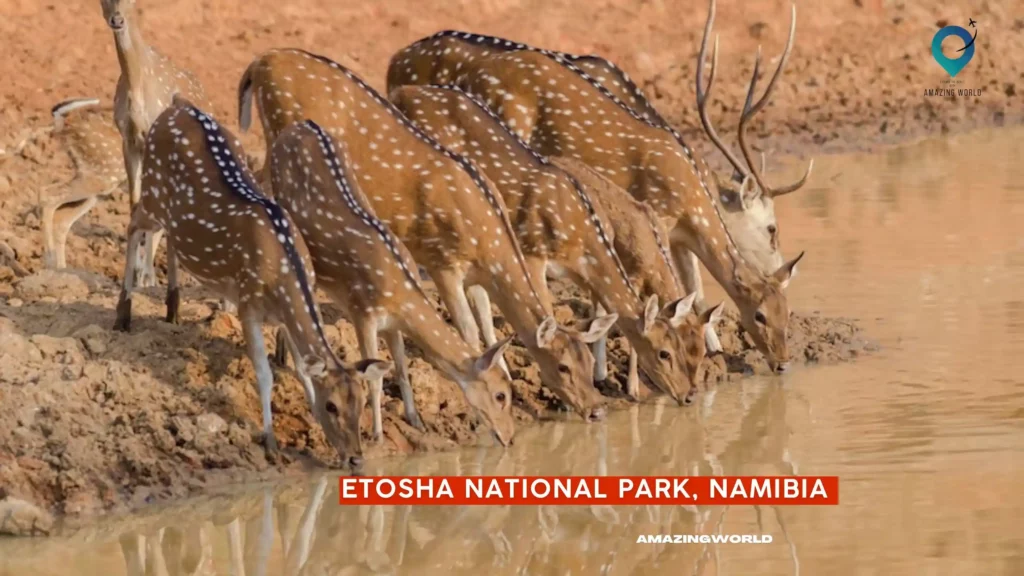
Location: Etosha National Park is located in the northern part of Namibia, covering an area of over 22,000 square kilometers.
Known for: Etosha National Park is known for its abundant wildlife, including elephants, lions, zebras, giraffes, and many more. The park is also home to over 100 species of mammals and 340 species of birds.
The best mode of transportation: The best way to explore the park is by car or on a guided safari tour.
Daily Budget: The daily budget for accommodation and food can range from $50 to $150 USD, depending on your preferences.
Culture: The local culture of Namibia can be experienced through traditional dances, crafts, and visiting local villages.
Nightlife: Etosha National Park is not known for its nightlife, but visitors can enjoy stargazing and night game drives within the park.
Food: The park offers a variety of dining options, including restaurants and cafes, as well as traditional food experiences.
Safety measures: Visitors are advised to follow park rules and guidelines, such as staying in designated areas and keeping a safe distance from wildlife.
Attractions: The main attractions in Etosha National Park are wildlife sightings and game drives. Other popular activities include visiting waterholes, birdwatching, and guided nature walks.
Some travel tips: Be sure to bring sunscreen, insect repellent, and appropriate clothing for hot and sunny weather. It’s also important to book accommodations and tours in advance, especially during peak travel seasons.
21. Lamu Island, Kenya – “Discover Swahili culture”
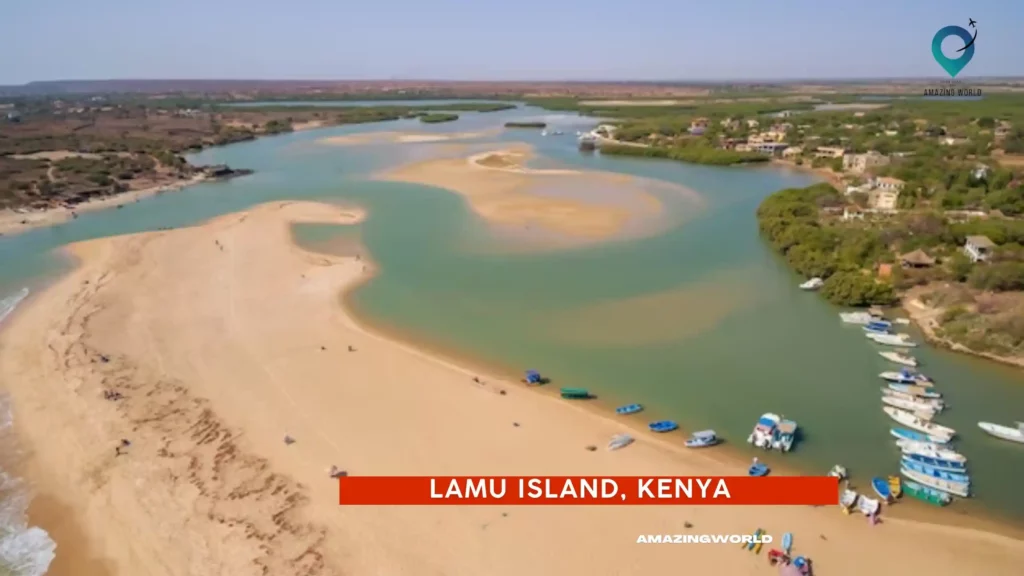
Location: Lamu Island is located off the coast of Kenya in the Indian Ocean. It is part of the Lamu Archipelago, which consists of several islands, including Lamu, Manda, Pate, and Kiwayu.
Known for: Lamu Island is known for its rich Swahili culture and history, its pristine beaches, and its traditional architecture. It is also a popular destination for water sports enthusiasts, as there are many opportunities for snorkeling, diving, and fishing in the surrounding waters.
The best mode of transportation: The best way to get around Lamu Island is on foot or by donkey. Cars are not allowed in the island’s Old Town, and there are no roads.
Alternatively, visitors can hire a dhow, which is a traditional wooden sailing vessel, to explore the surrounding waters and visit other islands in the archipelago.
Daily Budget: A daily budget of around $50-100 USD should be sufficient to cover accommodation, food, and transportation costs on Lamu Island.
Culture: Lamu Island is home to a unique Swahili culture that has been shaped by centuries of trade and contact with other cultures, including Arabic, Indian, and European. Visitors can explore the island’s rich cultural heritage by visiting historic landmarks such as the Lamu Museum and the Lamu Fort, or by attending cultural events such as the Lamu Cultural Festival.
Nightlife: Lamu Island is not known for its nightlife, but there are several bars and restaurants where visitors can enjoy a drink or a meal in the evenings. The island’s nightlife is generally quiet and low-key, with most visitors preferring to relax and enjoy the peaceful atmosphere.
Food: Lamu Island is known for its delicious Swahili cuisine, which is a fusion of African, Arab, and Indian flavors. Visitors can sample a range of traditional dishes, such as biryani, pilau, and samosas, at local restaurants and cafes.
Safety measures: Lamu Island is generally a safe destination for visitors, but it is always advisable to take basic safety precautions, such as avoiding walking alone at night and keeping valuables secure. Visitors should also be aware of the risk of malaria and take appropriate precautions, such as using mosquito repellent and sleeping under a mosquito net.
Attractions:
- The Lamu Museum
- The Lamu Fort
- The Donkey Sanctuary
- The Lamu Cultural Festival
- The Shela Village
- The Takwa Ruins
- The Manda Toto Nature Reserve
- The Kipungani Explorer
Some travel tips:
- Respect local customs and dress modestly, especially when visiting mosques or other religious sites.
- Don’t be afraid to haggle when shopping at local markets and bazaars.
- Take a sunset dhow cruise to enjoy the stunning views of the island and the surrounding waters.
- Plan your visit around the Lamu Cultural Festival, which takes place in November and offers a chance to experience traditional music, dance, and food.
- Stay in a traditional Swahili house or guesthouse to get a truly authentic Lamu Island experience.
22. Table Mountain, South Africa – “A natural wonder awaits”

Location: Table Mountain is located in Cape Town, South Africa.
Known for: Table Mountain is known for its stunning natural beauty, with panoramic views of Cape Town and the surrounding coastline. It is also home to a diverse range of flora and fauna, including many unique species.
The best mode of transportation: The best way to reach the top of Table Mountain is by taking the cable car, which offers incredible views on the way up.
Daily Budget: The entrance fee for the cable car is around 350 ZAR (South African Rand), or approximately 25 USD. There are also additional fees for guided tours or other activities on the mountain.
Culture: Table Mountain is an important site for the indigenous Khoi people, who have lived in the area for thousands of years. It is also a popular destination for tourists from around the world and is an important part of Cape Town’s cultural heritage.
Nightlife: There is no nightlife on Table Mountain itself, but Cape Town has a vibrant nightlife scene with many bars and clubs to choose from.
Food: There are several restaurants and cafes located on Table Mountain, offering a range of food and drink options for visitors.
Safety measures: Visitors are advised to take precautions against theft and pickpocketing, especially in the cable car and at the top of the mountain. It is also important to stay on designated trails and follow all safety guidelines.
Attractions: Aside from the stunning views, Table Mountain also offers a variety of hiking trails, rock climbing opportunities, and guided tours. It is also home to many unique plant and animal species, such as the Cape floral kingdom and the dassie, a small mammal found only in southern Africa.
Some travel tips
- Be sure to check the weather forecast before visiting Table Mountain, as it can be closed in bad weather conditions.
- It is also recommended to bring water and sunscreen, as the sun can be intense at high altitudes.
- Finally, visitors should be prepared for long lines at the cable car during peak tourist seasons.
23. Lake Nakuru, Kenya – “Flamingos galore”
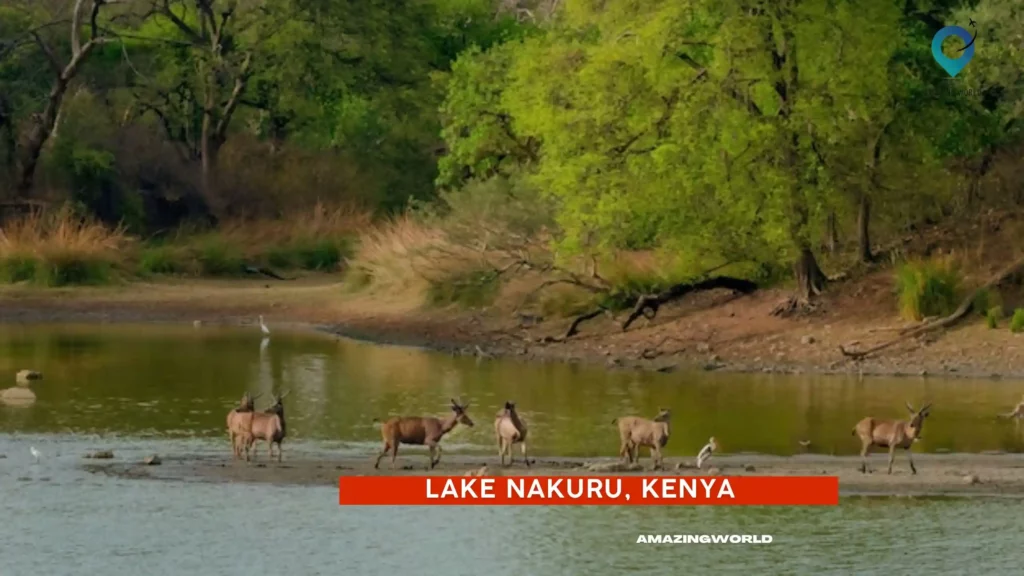
Location: Lake Nakuru is located in Nakuru County, in the Great Rift Valley region of Kenya.
Known for: Lake Nakuru is known for its large population of flamingos, which turn the lake pink. The lake is also home to over 450 bird species, as well as other wildlife such as lions, leopards, rhinos, and giraffes.
The best mode of transportation: The best mode of transportation for visiting Lake Nakuru is by car, either through a rental or a guided tour.
Daily Budget: The daily budget for visiting Lake Nakuru depends on the type of accommodation and activities chosen, but on average, it ranges from $50 to $150 per day.
Culture: The lake is surrounded by the traditional lands of the Maasai people, who have a deep connection to the wildlife and natural resources in the area.
Nightlife: Lake Nakuru is not known for its nightlife, but visitors can enjoy evening game drives or a relaxing evening by the lake.
Food: Visitors can try local Kenyan dishes such as ugali, sukuma wiki, and nyama choma in nearby restaurants.
Safety measures: Visitors should take precautions against malaria, which is prevalent in the area, and also be aware of wild animals in the park.
Attractions: The main attraction of Lake Nakuru is the flamingos, but visitors can also enjoy game drives, birdwatching, and nature walks.
Some travel tips:
- It is best to visit during the dry season from July to October when the wildlife is more concentrated around the lake.
- Additionally, visitors should bring binoculars and a good camera to capture the wildlife and stunning views of the lake.
Also, read– Top Famous Places to Visit in Indonesia
24. Erg Chebbi, Morocco – “A desert adventure awaits”
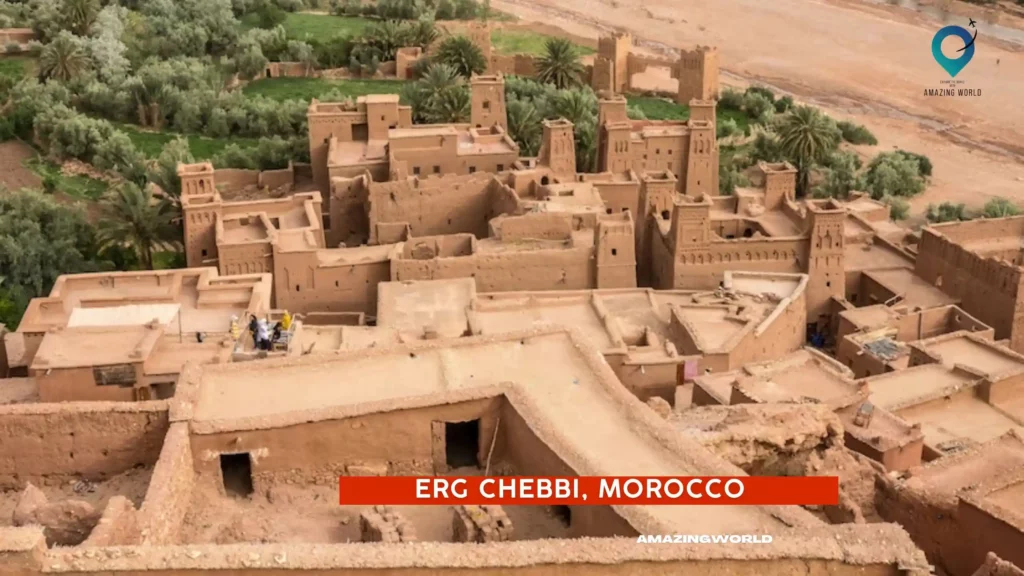
Location: Erg Chebbi is a set of dunes located in the southeastern part of Morocco, near the Algerian border.
Known for: Erg Chebbi is famous for its stunning landscape of towering dunes that stretch as far as the eye can see, as well as its breathtaking sunsets and stargazing opportunities.
The best mode of transportation: The best way to reach Erg Chebbi is by hiring a 4×4 vehicle or taking a guided tour from the nearby town of Merzouga.
Daily Budget: The average daily budget for a trip to Erg Chebbi is around $30-40, which includes accommodation, food, and transportation.
Culture: Visitors to Erg Chebbi can experience the local Berber culture by staying in a traditional desert camp and participating in cultural activities such as drumming, dancing, and camel riding.
Nightlife: Nightlife in Erg Chebbi is all about the stars. With almost no light pollution, the stars shine brightly and create a magical atmosphere.
Food: The local cuisine in Erg Chebbi is heavily influenced by Berber culture and is known for dishes such as tagine, couscous, and grilled meat.
Safety measures: When visiting Erg Chebbi, it is important to dress appropriately for the desert climate and to bring plenty of water and sunscreen. It is also recommended to travel with a guide or in a group, as the desert can be dangerous for inexperienced travelers.
Attractions: The main attraction in Erg Chebbi is, of course, the dunes, which visitors can explore on foot or by camel or 4×4. Other attractions include nearby oases, traditional Berber villages, and fossil sites.
Some travel tips:
- Be prepared for the hot and dry desert climate by bringing plenty of water and sunscreen.
- It is also important to respect the local culture and dress modestly, especially when visiting traditional villages.
- Finally, be sure to take advantage of the stunning stargazing opportunities at night.
25. Sani Pass, Lesotho – “A scenic mountain escape”
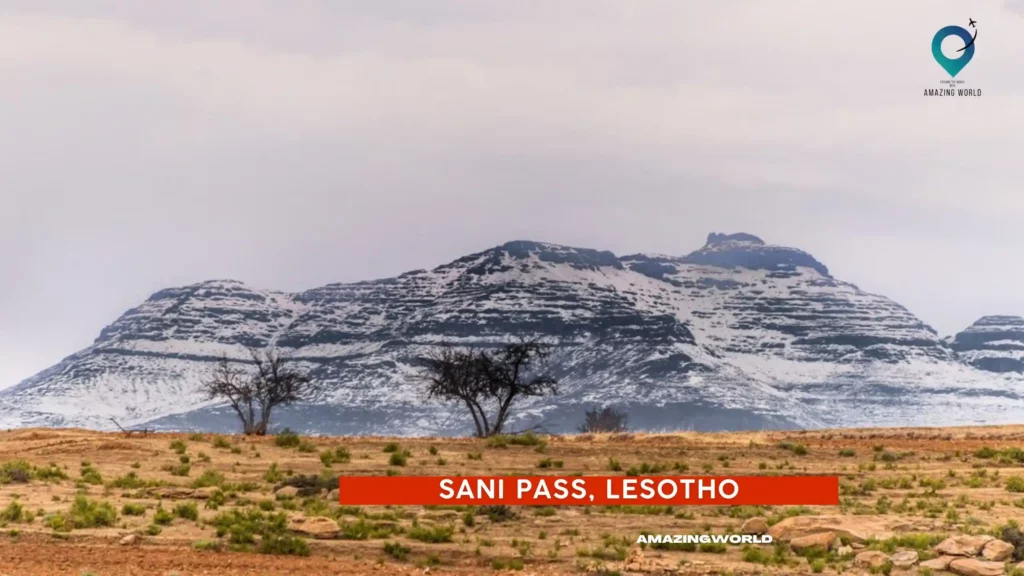
Location: Sani Pass is a mountain pass located in the southern part of the African continent, on the border between South Africa and Lesotho.
Known for: The Sani Pass is famous for its breathtaking scenery, which includes dramatic cliffs, waterfalls, and panoramic views of the surrounding mountains. It is also known for its challenging 4×4 road, which attracts adventure-seekers from around the world.
The best mode of transportation: The best way to explore Sani Pass is by 4×4 vehicle, as the road is steep and unpaved. Alternatively, visitors can hike or bike the past, but this requires a high level of fitness and experience.
Daily Budget: The cost of visiting Sani Pass depends on the mode of transportation and accommodation. 4×4 tours can range from $60-$150 per person, while self-driving can be cheaper but requires a suitable vehicle.
Accommodation options include camping, guesthouses, and lodges, with prices ranging from $10 to $100 per night.
Culture: Sani Pass is located in the heart of the Drakensberg Mountains, which is home to the Basotho people. Visitors can experience their rich cultural heritage by visiting local villages and participating in traditional activities such as dancing, singing, and cooking.
Nightlife: Sani Pass is a remote mountainous area and does not have a nightlife scene. Visitors can enjoy stargazing and the peacefulness of nature.
Food: Visitors can enjoy local cuisine such as ‘pap en vleis’, a traditional South African dish of porridge and meat, and ‘koeksisters’, a sweet pastry. Additionally, visitors can indulge in international cuisine at the various lodges and guesthouses in the area.
Safety measures: As Sani Pass is a mountainous area, visitors are advised to take caution and drive or hike with experienced guides. Visitors should also ensure they have adequate supplies such as food, water, and warm clothing, especially in winter when temperatures can drop below freezing.
Attractions: The main attraction of Sani Pass is the scenic mountain views, which include breathtaking waterfalls, cliffs, and valleys. Visitors can also explore the nearby Lesotho villages and the Sani Pass Chalets.
Some travel tips:
- Visitors should be prepared for the high altitude, which can cause altitude sickness. It is recommended to acclimatize in a lower altitude area before visiting.
- Visitors should also ensure they have a valid passport and appropriate visas if crossing the border into Lesotho.
Some Extra Tips
What are some tips for traveling solo in Africa?
Do your research: Research the country/countries you plan to visit and learn about the culture, customs, and laws. Make sure you have all the necessary travel documents, such as visas and vaccinations.
Stay connected: Stay connected with your family and friends back home by regularly communicating with them. Make sure someone knows your itinerary and checks in with them periodically.
Dress appropriately: Dress appropriately for the local culture and climate. Avoid wearing revealing or provocative clothing, especially in more conservative areas.
Use common sense: Use common sense when exploring unfamiliar areas. Be aware of your surroundings and avoid dangerous or unfamiliar neighborhoods.
Respect the locals: Show respect for the local people, their culture, and their traditions. Try to learn a few phrases in the local language to show that you are making an effort.
Stay informed: Stay informed about the current events in the country you are visiting. Avoid any areas that are experiencing political or social unrest.
Use reliable transportation: Use reliable transportation options, such as taxis and public transportation. Avoid traveling alone at night, especially in remote areas.
Keep your valuables safe: Keep your valuables safe by storing them in a secure location, such as a hotel safe. Avoid carrying large amounts of cash or wearing expensive jewelry.
Be open-minded: Be open-minded and flexible, and embrace the local customs and way of life. Solo travel in Africa can be a rewarding and life-changing experience, so enjoy the journey!
How do I prepare for my first solo trip to Africa?
Research your destination: Learn as much as you can about the country or countries you plan to visit, including the customs, culture, language, weather, and safety situation. This will help you be more prepared and informed during your trip.
Get the necessary vaccinations and medications: Consult with your doctor or a travel clinic to find out what vaccinations or medications you may need for your trip. This will help you avoid any health issues during your travels.
Pack wisely: Pack clothing appropriate for the weather and cultural norms, as well as any necessary gear or equipment for your activities. Pack light and make sure to leave some extra space for souvenirs or other items you may pick up during your trip.
Stay connected: Make sure to have a way to stay in touch with family and friends back home, as well as a way to connect with locals and other travelers. Consider bringing a mobile phone, a travel adapter, or a portable charger to ensure you can stay connected.
Keep safety in mind: Be aware of your surroundings and take precautions to ensure your safety. This can include avoiding isolated areas, carrying a copy of your passport and other important documents, and not flaunting valuable items.
Be open-minded and flexible: Solo travel can be unpredictable, so be prepared to adapt to changes in your itinerary or plans. Embrace new experiences and be open to meeting new people and trying new things.
Enjoy yourself: Finally, remember to have fun and enjoy yourself! Solo travel can be a truly transformative and rewarding experience, so make the most of it.
What are the best ways to get around Africa as a solo traveler?
The best ways to get around Africa as a solo traveler may vary depending on the country and region you plan to visit. Here are some common options:
Public transportation: Many African countries have well-developed bus and train networks that can be a cost-effective way to get around. However, keep in mind that public transportation can be crowded and uncomfortable, and may not be the safest option in some areas.
Domestic flights: Flying is often the quickest and most convenient way to get around Africa. Many African airlines offer domestic flights to major cities and tourist destinations.
Private transportation: If you have a larger budget, you may consider hiring a private driver or car rental. This will give you more flexibility in your travel plans and may be a safer option in some areas.
Walking: In some cities and towns, walking can be a great way to explore and get to know the local culture. Just be sure to stay aware of your surroundings and take appropriate safety precautions.
What are the visa requirements for traveling to Africa as a solo traveler?
Visa requirements for traveling to Africa vary depending on the country you plan to visit and your nationality. It’s important to research the specific visa requirements for each country you plan to visit well in advance of your trip.
Many African countries require visas for entry, and some countries may require a visa application to be completed in advance. Some countries may offer visa-on-arrival or e-visa options, while others may require a visa application to be submitted in person at a consulate or embassy.
Additionally, some countries may have specific requirements for travelers, such as proof of vaccination or a return ticket. It’s important to check the entry requirements for each country and to ensure that you have all the necessary documents and visas before departing on your trip.
What is the best time of year to visit Africa as a solo traveler?
The best time to visit Africa as a solo traveler varies depending on the region and the activities you plan to do. Generally, the dry season from June to October is a good time to visit for wildlife viewing, as animals tend to congregate around water sources.
However, this can also be the busiest and most expensive time to visit. The rainy season, which varies in timing depending on the region, can offer lush green landscapes and fewer crowds, but it may also make travel more difficult due to flooding and road closures.
It’s best to research the specific region you plan to visit and consult with a travel expert to determine the best time to go.
What are the best activities to do in Africa as a solo traveler?
There are plenty of activities to do in Africa as a solo traveler. Here are some of the best:
Safari: Africa is known for its wildlife, and taking a safari is an unforgettable experience.
Hiking: There are many beautiful hiking trails throughout Africa, from Table Mountain in South Africa to Mount Kilimanjaro in Tanzania.
Cultural experiences: Africa has a rich cultural heritage, and there are many opportunities to learn about the diverse cultures of the continent.
Beaches: From Seychelles to Zanzibar, Africa is home to some of the world’s most beautiful beaches.
Volunteer work: Many organizations offer volunteer opportunities throughout Africa, providing a chance to give back and make a difference.
Adventure sports: From bungee jumping to white water rafting, Africa has plenty of adrenaline-fueled activities for the adventurous solo traveler.
Food and wine tours: Africa is home to some delicious and unique cuisine, as well as world-renowned wine regions.
Music and dance: Africa is known for its vibrant music and dance scene, with many opportunities to experience local performances and festivals. etc.
How much did you like Our detailed 25 Best Destinations in Africa for First-Time Solo Travelers? Review Also, please share these Blogs with your friends on social media.
Recommended

Meet David Hoper, a passionate travel Blog writer with 7+ years of experience in travel content. Through his exemplary storytelling and engaging narratives, he shares his experiences and brings destinations to life. With a keen eye for detail and a love for exploration, he has cultivated a diverse portfolio of travel blogs that inspire and inform readers worldwide.
